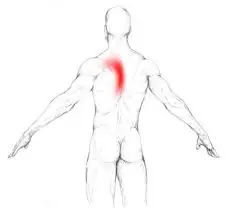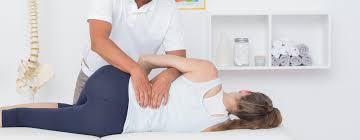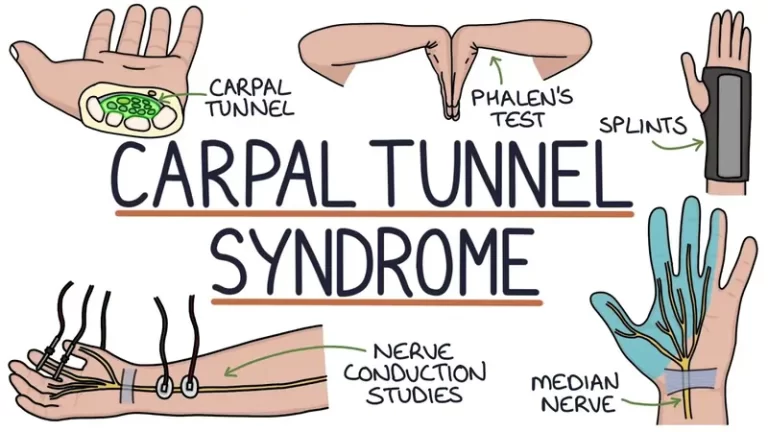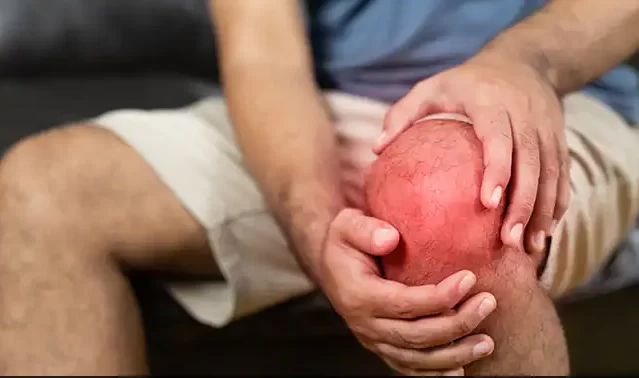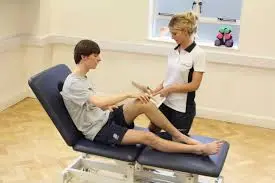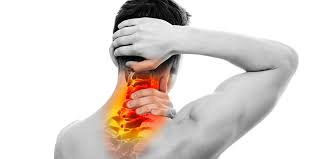Rhomboid Muscle Pain
What is the rhomboid muscle?
Rhomboid muscle pain refers to discomfort or tension in the Rhomboid muscle located between the shoulder blades. These muscles play a crucial role in shoulder blade movement and posture, providing stability and support during daily activities.
Pain in this area often results from overuse, poor posture, or strain, leading to tightness, aching, or even sharp sensations. Understanding the causes and management of rhomboid muscle pain is essential for maintaining upper back health and preventing further discomfort.
Causes of Rhomboid Muscle Pain:
The following factors may cause someone to have rhomboid pain:
- bad posture caused by prolonged,
- sleeping on one side,
- repeatedly tossing objects,
- as while playing tennis or volleyball,
- repeatedly pulling objects,
- like when lifting weights,
- due to an injury.
Symptoms of Rhomboid Muscle Pain:
- Upper Back Pain
- reduced shoulder range of motion,
- a crunching sound while rotating the shoulder,
- arm fatigue during repetitive overhead motions,
- Arm weakness.
Diagnosing rhomboid muscle pain:
- A doctor could start by asking a patient how long they have been dealing with rhomboid muscle pain.
- After that, they could perform a physical examination, which might include assessing the range of motion.
- They could ask for imaging tests like X-rays, CT scans, and MRI scans if they think any bone abnormalities are causing the pain.
Treatment for rhomboid muscle pain
For instance, a doctor could first recommend physical therapy and painkillers to someone with a winged scapula.
Exercises used in physical therapy can also help to strengthen back muscles like the rhomboids. Additional therapies for back pain consist of:
- heat and cold treatment,
- RICE technique (compression, elevation, ice, and rest).
- using anti-inflammatory drugs.
- engaging in relaxation exercises
- massage,
- Transcutaneous electrical nerve stimulation (TENS)
- Surgery can be necessary in more severe cases of rhomboid injury.
Exercises for rhomboid muscle pain
A person with rhomboid pain may benefit from the following exercises.
A person should stop performing these exercises right once if their rhomboid muscle pain gets worse since this might mean that their shoulder or back is being strained.
Additional guidance on which exercises could help someone with rhomboid muscle pain and how to do them properly can be obtained from a medical expert.
Squeezing the shoulder blades together
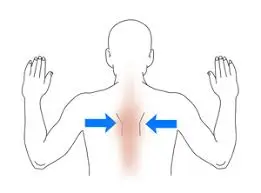
- Hold for five seconds.
- Let your shoulders drop.
- For one minute, repeat.
Rotating the neck
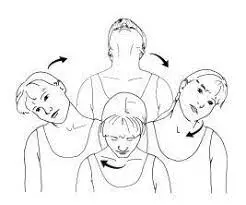
- Look straight ahead whether standing or sitting, and make sure your neck and spine are in alignment.
- Look as far to the right as you can comfortably while exhaling.
- Take a deep breath for 30 seconds.
- Return the head to the center after taking a breath.
- On the left side, repeat.
Sidearm stretching
- In front of the shoulder, move the left arm across the torso.
- Wait 30 seconds.
- Continue on the opposite side.
- On each side, repeat five times.
Stretching the rhomboids
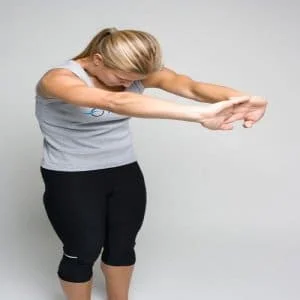
- The space between the shoulder blades should be somewhat stretched.
- Wait 30 seconds.
- On each side, repeat this twice.
Stretching the upper back and neck
- Take a breath and glance up slowly.
- After exhaling, carefully bring the chin back to the chest.
- For 30 seconds, repeat breathing in and out while looking up and down.
- Unlace your fingers gently, then take a minute to unwind.
- Once or again, repeat this process.
Cow face pose
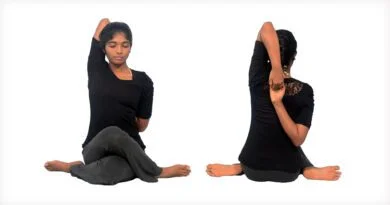
- Elevate the arm toward the head while still sitting.
- If this is challenging, wrap a rope or towel around the left arm to draw it in farther rather than clasping further with the right hand.
- Wait 30 seconds.
- Continue on the opposite side.
Locust pose
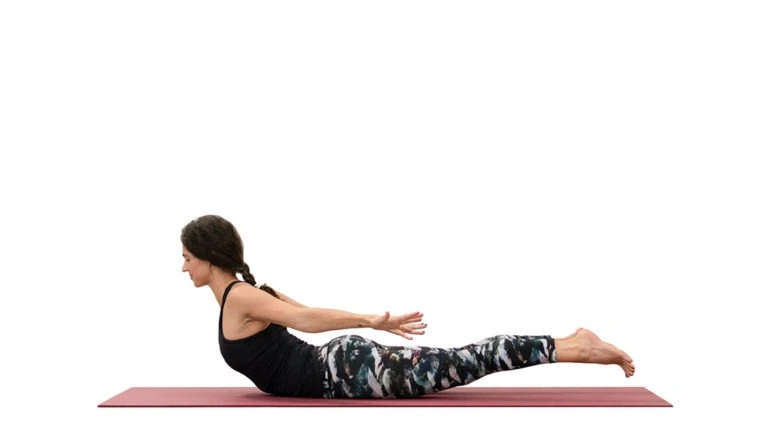
- Arms should be brought to the sides.
- The heels should turn away from the body as the feet relax.
- Place the forehead on the ground.
- Raise the arms, chest, and head gradually until they are comfortable.
- Raise the legs to prolong the position.
- Look forward to maintaining a straight neck.
- Wait 30 seconds.
- Repeat the stance one or two more times after gently releasing it.
Preventoin of rhomboid muscle pain
Regular exercise to build stronger back muscles and a healthy, balanced diet that maintains strong bones and muscles
keeping a healthy weight
prevent lifting excessive weights without the right training, maintain normal posture, and prevent slouching. If sleeping on their side, place a little cushion between their knees; if they are sleeping on their back, place a small pillow behind their knees.
Summary
The rib cage, spine, and shoulder blades are all connected to the rhomboid muscles. Overstretching, prolonged sitting, and repetitive actions can all harm the rhomboids.
Pain in the rhomboid muscles may be reduced with mild activities. Anti-inflammatory medicines, painkillers, and heat and cold therapy are other therapies.
If someone has significant rhomboid muscle pain or if the pain doesn’t go away even after therapy and rest, they should see a doctor.
FAQs
How can rhomboid pain be resolved?
Our therapy approach starts with self-massage and stretching to instantly relieve the tense muscles. Next, the thoracic spine is opened, and finally, a neck exercise is performed. This is intended to provide a comprehensive treatment for rhomboid pain.
Can rhomboid pain be relieved by acupuncture?
Trigger points, which may be released with acupuncture and dry needling, are frequently the source of rhomboid muscle pain. When it comes to rhomboid trigger points, the most typical complaints are upper back and medial shoulder blade pain.
Which is better for rhomboid pain: heat or ice?
Ice should be applied as soon as possible following the accident. It lessens pain and inflammation. After the injury, you can use a warm washcloth or damp heating pad to keep your muscles taut for up to fifteen minutes.
What is rhomboid pain’s trigger point?
Level with the scapular spine, the rhomboid minor trigger point is located immediately medial to the inner margin of the scapula. The bottom portion of the scapular border is where the rhomboid main trigger points are located, one above the other.
How can someone who has rhomboid pain sleep?
Steer clear of activities that strain these muscles; apply ice to the region many times a day for 15 to 20 minutes; cover the area with a compression bandage; and use pillows to keep your shoulders and chest raised when you sleep or lie down.
Which medication works best for rhomboid pain?
In the beginning, rhomboid muscle pain may be relieved by painkillers such as acetaminophen (Tylenol), naproxen (Aleve), and ibuprofen (Advil, Motrin). Based on your medical history, it’s critical to confirm that you can take these drugs safely.
Which nerve is responsible for rhomboid pain?
The inability to retract, raise, and stabilize the scapula is caused by damage, compression, or prolonged strain of the nerve.
Does rhomboid pain respond well to heat?
Heat treatment. This lessens inflammation and eases tense muscles. Heating pads are perfect for treating rhomboid pain at home since they are portable and reasonably priced.
Does rhomboid pain last a lifetime?
The degree of damage determines how soon you heal from a rhomboid sprain or strain. It may take weeks or even months for more severe injuries to completely recover.
How should rhomboid pain patients sleep?
Nutrition and Soft Tissue Therapy Blog
It’s also crucial to modify sleeping arrangements to safeguard the rhomboid muscles. For people who have shoulder blade pain, sleeping in a fetal position with a body pillow, for instance, can provide a pleasant position and assist in preserving spinal alignment.
Can rhomboid pain be relieved by a massage?
It is believed that the rhomboids are a common myofascial cause of stiffness and/or pain in the middle of the back. Therefore, a small amount of focused soft tissue mobilization treatment in this region can frequently significantly lessen pain.
References
- Watson, S. (2018, March 28). Rhomboid Pain. Healthline. https://www.healthline.com/health/rhomboid-pain
- Martin, L. (2024, March 19). What to know about rhomboid muscle pain. https://www.medicalnewstoday.com/articles/rhomboid-muscle-pain

